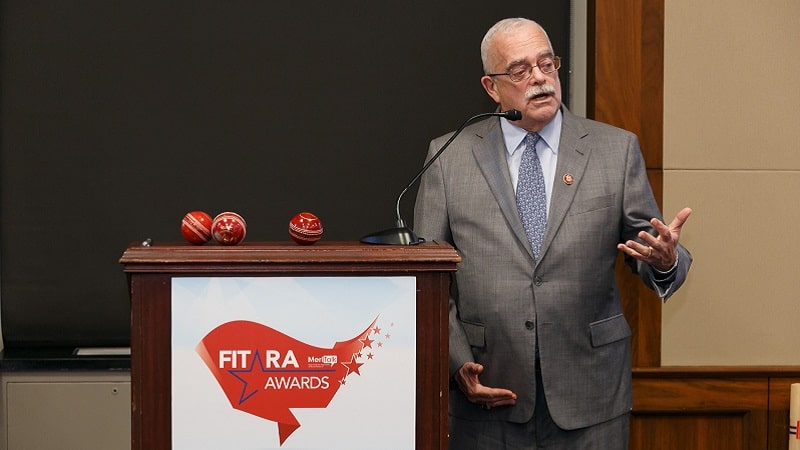
Rep. Gerry Connolly, D-Va., ranking member of the House Oversight Subcommittee on Cybersecurity, Information Technology, and Government Innovation, said today that he and subcommittee Chairwoman Nancy Mace, R-S.C., are working collaboratively to evolve the FITARA Scorecard categories.
Specifically, the congressman said he is interested in categories for cloud and CIO reporting structures, as well as other missing categories like legacy IT systems and workforce.

“I look forward to a candid back and forth about best ways to evolve the metrics, methodology, and categories on the scorecard,” Rep. Connolly today during a roundtable to discuss the 16th version of the FITARA Scorecard.
“It is no surprise that today’s topics will focus on the recent letters to every agency that implements FITARA,” he added. “These letters, sent on August 16, asked agencies about their CIO reporting and authority structures, data center consolidation, and cloud computing. But we also want to hear from you all about categories we might be missing, such as a legacy IT systems inventory, or a workforce inventory.”
Today’s release of the 16th edition of the FITARA Scorecard marks a departure from the usual procedure, in which the House Oversight releases the scorecard, and then its government technology-focused subcommittee holds a formal hearing to discuss the results.
Instead, Rep. Connolly’s office released the scorecard and held a roundtable discussion this afternoon with representatives from the Government Accountability Office (GAO) and five Federal agencies.
Rep. Connolly described this new format of discussion as an “anomaly,” noting that continued oversight of the FITARA scores must occur to hold agencies accountable.
“Since FITARA’s enactment, this subcommittee has held 15 oversight hearings and produced 15 different scorecards over eight years. Our efforts have created the longest continual oversight effort ever in Congress, and we do it because it works,” Rep. Connolly said.
“With this history in mind, it is clear FITARA is not a niche issue. To the contrary, it is an essential function of this subcommittee,” he continued. “Furthermore, the grades on the scorecards are never meant to be seen as scarlet letters but are intended to drive IT modernization through public accountability. With the biannual publication of the scorecard, we hope CIOs can take their grades to leadership to illustrate the importance of secure and modernized Federal IT.”
The latest scorecard features seven grading categories for which scores were assigned – 1) agency CIO authority enhancements; 2) transparency and risk management; 3) portfolio review savings; 4) data center consolidation; 5) modernizing government technology; 6) cyber; and 7) transition off Networx contract.
Looking ahead to the 17th edition of the FITARA Scorecard, the biggest wildcards evident from the scorecard released today are previews of two new categories to come – one for cloud and one for CIO reporting structure, budget, and acquisitions.
Rep. Connolly also questioned six government officials during today’s roundtable on what other evolutions they would like to see to the FITARA Scorecard.
GAO’s Director of IT and Cybersecurity, Carol Harris, who has worked closely with Rep. Connolly on the FITARA scores over the years, said that today’s scorecard is an overall positive iteration, but she hopes in the future to evolve the cyber metrics to include IT workforce.
On the cloud front, Rep. Connolly specifically said he hopes future iterations of FITARA will measure implementation of FedRAMP. The congressman is also interested in looking into legacy IT systems at agencies for future FITARA iterations, though he did not specify how this category would be measured.
One-third of the 24 Federal CFO Act agencies earned higher grades on the 16th edition of the FITARA Scorecard released today by the office of Rep. Connolly.
The FITARA Scorecard grades are compiled by GAO and have been published on a semi-annual basis since 2015. The scorecard grades the 24 largest Federal agencies across an evolving range of IT-related categories.
On the latest scorecard, eight agencies saw their overall grades improve by one full grading letter, while the other 16 agencies hung steady with their grades from the 15th edition of the scorecard released in December of last year. No agency earned a lower grade, and none received worse than a “C” grade overall.
Three of the 24 agencies aced the scorecard test by earning “A” grades overall. The U.S. Agency for International Development maintained its “A” grade from the previous scorecard, while both the Department of Education and the Department of Labor earned overall “A” grades this time around – from “B” grades last December.
“As we consider incorporating many insights offered at today’s discussion into future FITARA Scorecards, I look forward to collaborating beyond just this event to create a thoughtful, effective, and bipartisan tool that empowers our CIOs and then holds them accountable for transformational IT change,” Rep. Connolly said.
